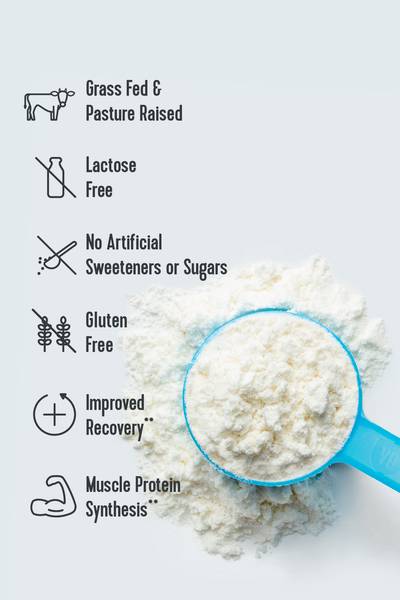Once you find your favorite workout, you probably find yourself doing it over and over. But eventually, you might get bored. By incorporating challenging training techniques into our programming can be a great way to add variety, intensity, and excitement back into your workouts if you find your motivation is waning.
When you're looking to switch up your workout routine, consider trying one of these five training techniques.
Vital Note: This article has been made available for informational and educational purposes only. It is not intended to be a substitute for professional medical advice, diagnosis, or treatment. Always seek the advice of your physician or another qualified health provider with any questions you may have regarding a medical condition. Your licensed healthcare professional can best provide you with the diagnosis and treatment of any medical condition and assist you as well in deciding whether a dietary supplement will be a helpful addition to your regimen.

What are weight training methods?
1. Drop Sets
Drop sets are a fun way to finish a workout. To add drop sets to your workout, perform your set as usual on the desired body part for the number of repetitions in your program. Rather than stopping here, however, you would immediately lower the lifting weight and continue performing reps to failure. This can be done several times and is often added to many programs up to three times, but the sky is the limit.
If you're training alone, dumbbells, cables and many other machines make for an easy drop. When performing exercises like the bench press or leg press for example, it is helpful to have a partner there to remove the weight quickly so that you're not giving the muscle a break. The key thing with drop sets is that there are no breaks. The weight is lowered, and you immediately continue performing your repetitions.
2. Pyramid Training
Pyramids are a great way to begin a workout after performing your warm-up sets. To structure your workouts as pyramids, you begin with a lighter weight which you would perform for a higher number of repetitions. In each subsequent set, the weight increases while the number of reps being performed decreases.
For working sets, the last few reps of each set should be a struggle. As we lower the number of repetitions being performed in our working sets, there is an increase in the resistance.
Related Articles
3. Reverse Pyramid Training
Pyramid training begins with lighter weights for higher repetitions, so reverse pyramid training is just the opposite. Here, you would begin with heavier weight for lower repetitions. In each subsequent set, the lifting weight would decrease while the number of repetitions increase.
This is done because the last several repetitions of our working sets should be a challenge. As the number of reps increase, you'll need to decrease the resistance (lower the weight you are working with).
4. Supersets
I absolutely love supersets and use them regularly in my programming. They are an extremely efficient use of time in the gym and lots of fun. Basically, to perform supersets, you'll combine two exercises together, performed one after the other with no break in between.
Traditionally, antagonist muscle groups are used (for example, chest with back or biceps with triceps) but many – including myself – use a looser application of the training technique. For example, you can can pair chest with biceps or back with triceps.
Compound sets are often referred to as supersets. They are two exercises performed for the same muscle group back to back with no rest in between.
5. Giant Sets
These are great for conditioning and maximizing your time in the gym. Giant sets are four (or more) exercises in a row for one body part performed back-to-back, one after the other, with no rest in between. An example for a giant set on shoulders would be: standing dumbbell press with dumbbell lateral raise with front raises, with bent-over reverse flys, followed by the break, and then repeated. The key thing here is to have a small area set up with all the equipment you need prior to beginning. If you work out at a busy gym, this may not be a technique you would be able to do during peak hours, as you'd need to use a lot of equipment and space, so use good judgement.
As with all advanced training techniques, it's important to add them to your programming mindfully and use common sense. You would not, for example, perform all your sets as drop sets. These are simply techniques to add to your existing workouts to increase intensity and help bust out of plateaus. If you have any questions, it's best to work with a certified trainer who can help you design workout programming that's right for your goals.















